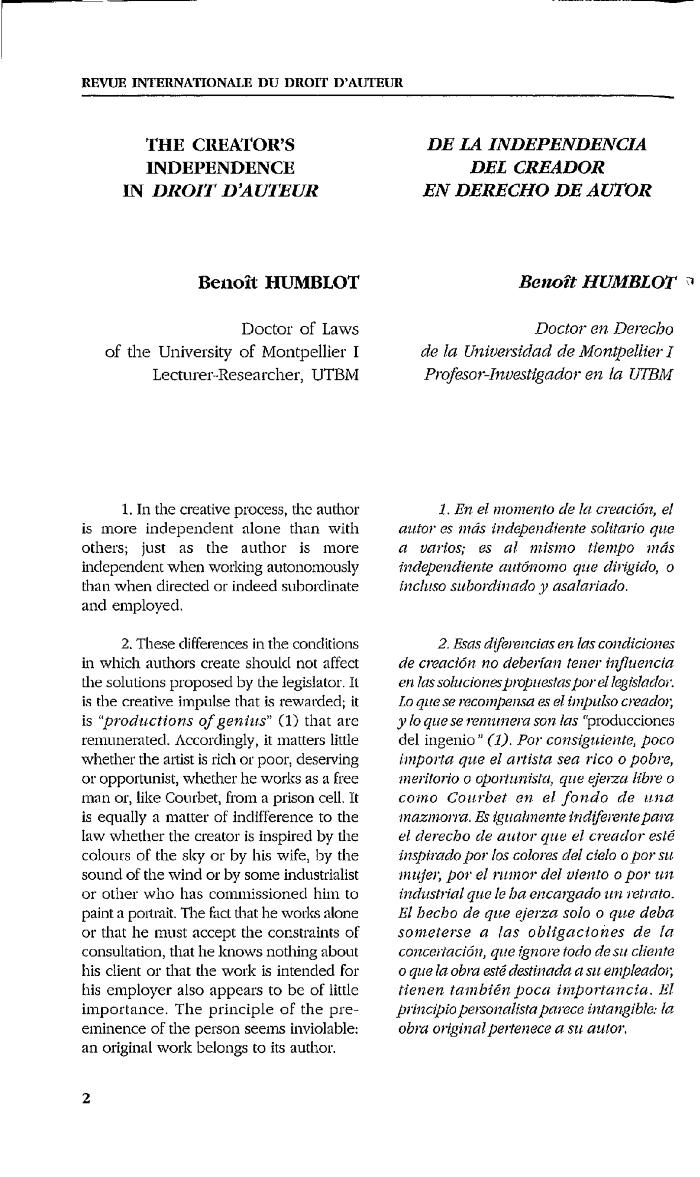
Doctrine
This article is available to RIDA subscribers only.
RIDA 199 | 01-2004
Doctrine

The creator's independence in droit d'auteur
HUMBLOT, Benoît
199-D1_EN Afficher la version française de cet article.
Afficher la version française de cet article.
 Show the english version
Show the english version
 Mostrar la versión en español
Mostrar la versión en español
Start of the article :
As soon as it announces its intention to protect intellectual works, the law is duty bound to define the category that it embraces, in other words the category of what is eligible for protection. This category is presented traditionally as being homogeneous, with sure and well-defined boundaries: inside are duly original works of authorship; outside everything that cannot claim to be original. On closer inspection, the category of reservable subject matter seems to function quite differently. Instead of a binary and mechanical logic of inclusion / exclusion, a subtle gradient can be seen inside the category itself. The traditional presentation of a category of reservable subject matter that contains homogeneous and, in a way, equivalent elements thus suggests an equal distribution of the benefits of authors’ rights and a limpid diffusion of the person-oriented principles. The reality is quite different: mirroring a graduated and concentric categorisation of reservable subject matter is a variable and degressive distribution of the exploitation monopoly and the moral rights. Far from having rejected the demon of graduation that is sometimes called merit, the law of authors’ rights – in which case law, legal literature and practice must obviously be included, in addition to legislation – tolerates its presence and even worships it discreetly but unfailingly.